Benefits of squats include strengthening the abs and back muscles, building muscle in the thighs and glutes, supporting weight loss, and decreasing the risk for injury.
Squats are a simple exercise that does not require a lot of preparation in order to do. They are performed by placing your feet slightly apart, extending your arms out in front of you, and squatting down until your thighs are parallel with the floor.
While often thought of as only a leg exercise, squats also work other muscles in addition to the legs, helping to strengthen the abs and back muscles.
While simple to do, it is important to work with an exercise physiologist or certified personal trainer to ensure good form and decrease the risk for injury.
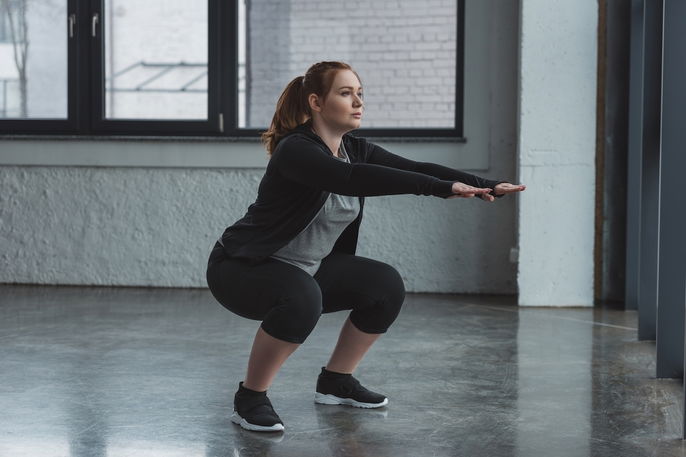
Main benefits
The principal benefits of squats include:
- Strengthening the abs and back muscles;
- Building muscle in the thighs and glutes;
- Improving physical fitness;
- Decreasing the risk for injury;
- Helping support weight loss;
- Reducing cellulite in the glutes and legs.
Squats are a complete exercise, meaning they target various muscle groups, including the abs, back, legs, and glutes. In this way, they also help to tone the body and improve posture.
How to do
Tips on how to do a squat correctly in order to get all of the benefits of this exercise without injuring your back include:
- Keeping your feet slightly apart and planted firmly on the ground;
- Stretching your arms straight out in front of you;
- Keeping your back straight and avoiding compensating with the hips, which is a common occurrence;
- Inhaling at the top and exhaling as you lower down;
- Lowering down to the point that your thighs are parallel with the floor.
A good tip for making sure you are doing squats correctly is to look at yourself in the mirror, ideally to the side.
When done correctly, you should feel the abs and thigh muscles engage.
Tips for beginners
Beginners should start by doing wall squats with the back supported by a Pilates ball to help with better perception of movement.
You can also try squatting down onto a bench and lifting back up to understand how the movement should be done.
For beginners, the recommendation is 15 reps, starting with 3 to 5 sets with 1 minute of rest in between sets.
Over time, you may be able to increase the number of squats performed in each session.
Different types
Different types of squats include:
1. Barbell squats
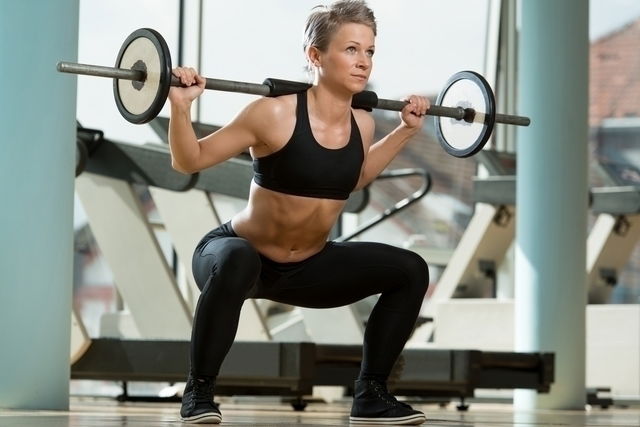
Barbell squats are the most common type of squat performed at the gym. To do this exercise, position the barbell on the back of the shoulders, grasping the bar with your hands and positioning your elbows forward. Perform the squats.
It is important to do this exercise under the supervision of an exercise physiologist or certified personal trainer to ensure proper form and technique.
Depending on fitness level, dumbbells can be used, or the barbell can be placed on the back of the shoulders or on the upper chest.
2. Front squats
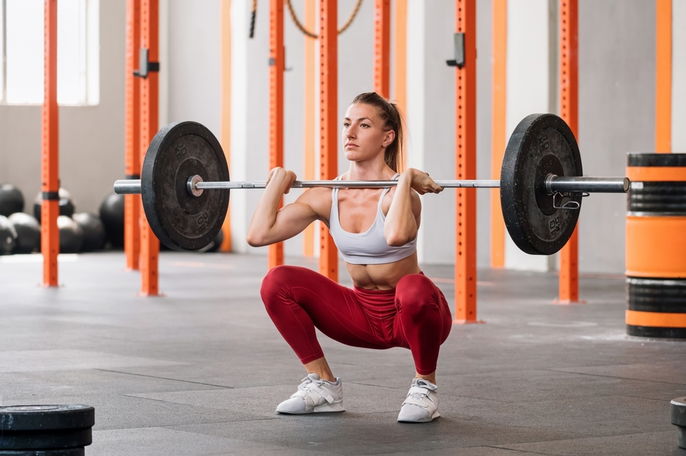
With front squats, you should hold the weight in front of your body and squat down as low as you can go.
An isometric hold may be recommended to help intensify this exercise, in which you hold the squat position for a few seconds before returning to stand.
3. Sumo squats
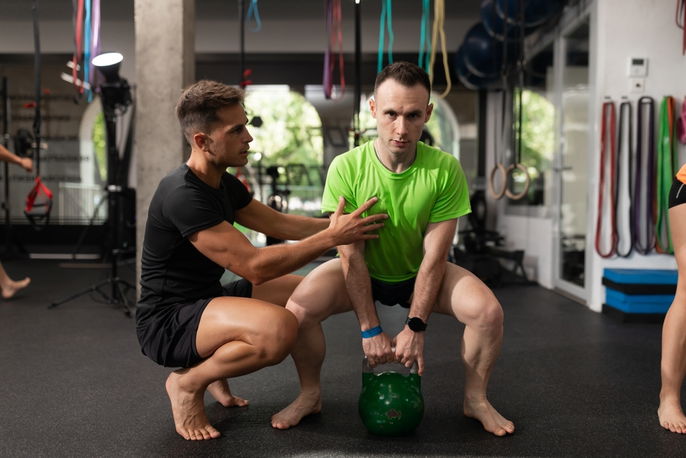
Sumo squats are done with your feet further than hip distance apart and your feet turned slightly out to the sides.
After getting into position, perform the squat, lowering the hips down until they are slightly lower than your knees and pushing your butt back as if your were sitting down in an imaginary chair. Make sure to keep your back straight throughout.
This exercise can be done using a kettleball or dumbbell, which should be held in front of your body, or a barbell. To increase range of motion, you can try placing one foot on a step or platform, holding the weigh with your arms straight down, and squatting until the weight is lower than the step.
4. Lunges

Lunges involve placing one foot forward and one foot back, with the majority of the weight in the front leg.
The following are step by step instructions for performing a lunge:
- Take a step forward: flex the front knee and bend into the front leg. The front foot should be planted firmly on the ground and the back heel elevated, supporting yourself on the toes of the back foot.
- Lower the hips: slowly lower the hips until the front thigh is parallel to the floor and the back knee is almost touching the floor;
- Rise back up to the starting position. After completing all the reps, switch legs so that your back foot is now in front and your front foot in back.
During this exercise you can place your hands on your hips, behind your head, or holding weights. To intensify the exercise, you can also try placing one foot on a Bosu ball. Static lunges, jumping lunges, and walking lunges are all different variations of this exercise.
5. Bulgarian split squat
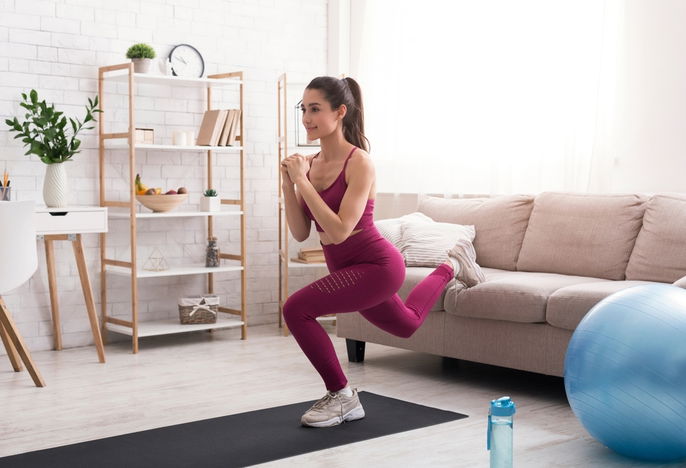
Similarly to lunges, the Bulgarian split squat also works one leg at a time. To do this exercise, take a step forward and place your back foot on a workout bench or a chair.
Next, hinge slightly forward and perform a squat, trying to touch your back knee to the floor. After repeating all reps, switch legs and repeat on the other side.
Bulgarian split squats can be done using only your body weight or by adding dumbbells.
6. Jump squats

Jump squats help tone your body and also contribute to fat loss and improved cardiorespiratory endurance by increasing energy expenditure.
Start by lowering all the way down into a squat and then push off the ground and jump up, straightening your knees. As you land, lower right back down into the squat to prepare for the next jump.
7. Hack squats
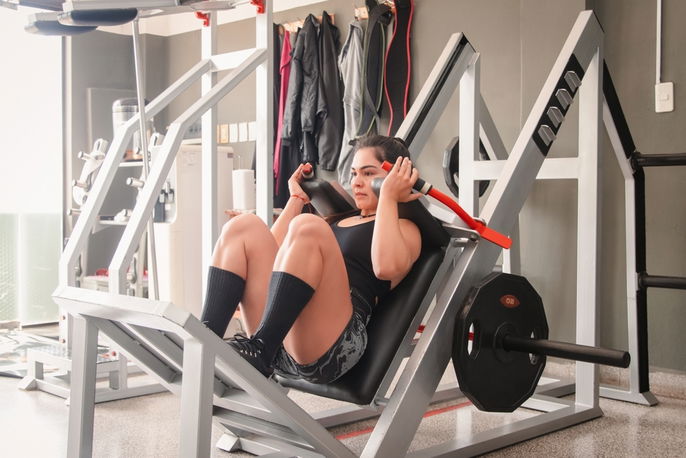
Hack squats are done using the hack squat machine and work various muscle groups at once, including the hamstrings, glutes, calves, and hip flexors, but primarily the quadriceps.
This type of squat helps prevent injury to the back and the joints, like the knees and the hips, since the machine guides the movements, making them more stable and safe to perform.
8. Smith squats
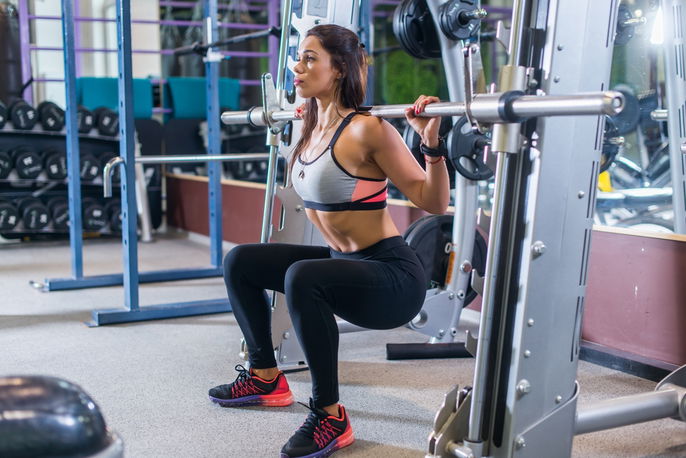
Smith squats are done using the Smith machine, which guides the movement of the squat. The Smith machine has a bar with weights and helps increase muscle mass and strength in the lower body.
This is an advanced type of squat that should be done by those with experience. This is because correct form and technique are important for avoiding injury with this exercise.
Also recommended: Leg Workout: 15 Exercises (at Home & Gym w/ Animations) tuasaude.com/en/leg-workout





























